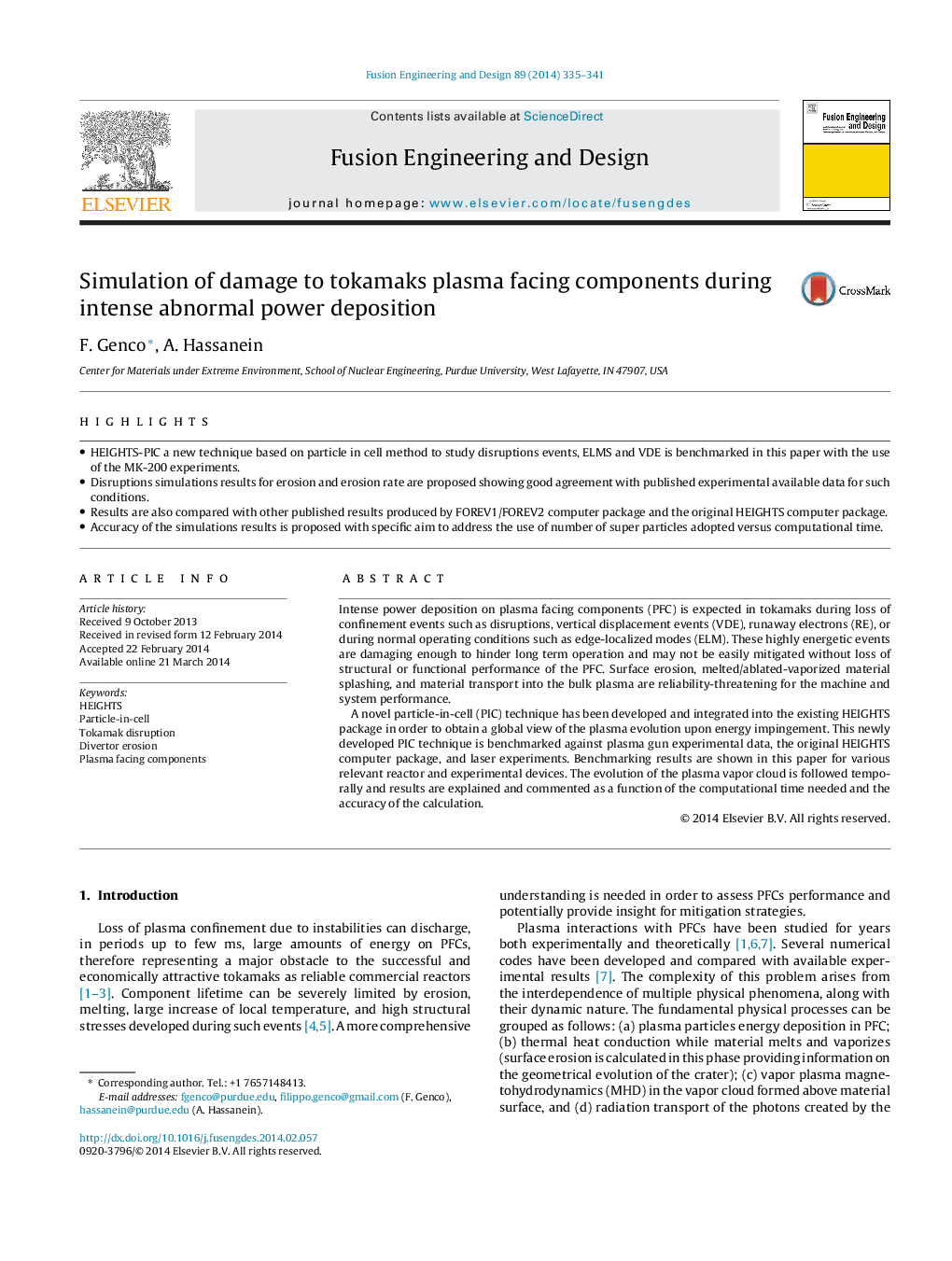| کد مقاله | کد نشریه | سال انتشار | مقاله انگلیسی | نسخه تمام متن |
|---|---|---|---|---|
| 271049 | 504987 | 2014 | 7 صفحه PDF | دانلود رایگان |
• HEIGHTS-PIC a new technique based on particle in cell method to study disruptions events, ELMS and VDE is benchmarked in this paper with the use of the MK-200 experiments.
• Disruptions simulations results for erosion and erosion rate are proposed showing good agreement with published experimental available data for such conditions.
• Results are also compared with other published results produced by FOREV1/FOREV2 computer package and the original HEIGHTS computer package.
• Accuracy of the simulations results is proposed with specific aim to address the use of number of super particles adopted versus computational time.
Intense power deposition on plasma facing components (PFC) is expected in tokamaks during loss of confinement events such as disruptions, vertical displacement events (VDE), runaway electrons (RE), or during normal operating conditions such as edge-localized modes (ELM). These highly energetic events are damaging enough to hinder long term operation and may not be easily mitigated without loss of structural or functional performance of the PFC. Surface erosion, melted/ablated-vaporized material splashing, and material transport into the bulk plasma are reliability-threatening for the machine and system performance.A novel particle-in-cell (PIC) technique has been developed and integrated into the existing HEIGHTS package in order to obtain a global view of the plasma evolution upon energy impingement. This newly developed PIC technique is benchmarked against plasma gun experimental data, the original HEIGHTS computer package, and laser experiments. Benchmarking results are shown in this paper for various relevant reactor and experimental devices. The evolution of the plasma vapor cloud is followed temporally and results are explained and commented as a function of the computational time needed and the accuracy of the calculation.
Journal: Fusion Engineering and Design - Volume 89, Issue 4, April 2014, Pages 335–341
